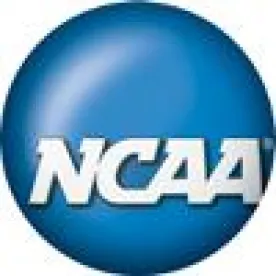For many years, the National Collegiate Athletic Association (NCAA) has promulgated rules that govern the eligibility and conduct of athletes at its member institutions. NCAA rules prohibit student-athletes from receiving pay for the use of their names, images and likenesses (NILs). Are the NCAA’s rules subject to the antitrust laws, and, if so, are the rules prohibiting athletes from receiving pay for their NILs a violation of the antitrust laws?
On September 29, 2015, the Ninth Circuit Court of Appeals ruled on these critical issues in O’Bannon v. NCAA, et al. The Ninth District agreed with the District Court by holding that the NCAA’s rules prohibiting student-athletes from profiting from their NILs are covered by the Sherman Act and are an unlawful restraint of trade in violation of the Sherman Act. The Ninth Circuit found that while the NCAA’s amateurism rules had an anti-competitive effect on the higher education market for athlete recruits, amateurism rules serve two procompetitive purposes: 1) they reinforce the NCAA’s commitment to amateurism, which strengthens the appeal of NCAA athletics to consumers; and 2) they maintain the integration of athletics into education at higher education institutions. The Court of Appeals then evaluated the less restrictive alternatives to the NCAA’s current compensation rules imposed by the District Court – an injunction prohibiting the NCAA from preventing student-athletes from receiving athletics-based financial aid up to the cost of attendance and the creation of a trust to compensate student-athletes who have graduated with as much as $5,000 for each year of participation. The Ninth Circuit upheld the District Court’s finding that NCAA members should be permitted to give athletics scholarships up to the full cost of attendance but rejected the obligation to compensate student-athletes for each year of participation after they graduate.
Determining who “won” the case is less than clear. The Ninth Circuit failed to agree with the NCAA’s assertion that the validity of its amateurism rules should be presumed and need not be proved. Instead, the Court made it clear that antitrust challenges regarding restraints on student-athlete compensation should be evaluated using the rule of reason analysis applied in antitrust cases. Further, the Ninth Circuit affirmed the District Court’s ruling that the NCAA’s amateurism rules did in fact violate the Sherman Act, which likely will subject the NCAA to future antitrust claims.
On the other hand, the Ninth Circuit’s judgment that NCAA regulations related to restraints on student-athlete compensation serve the procompetitive purpose of integrating academics within athletics will help the NCAA defend against antitrust claims. This procompetitive benefit historically has been a staple in the NCAA’s defense to antitrust claims, and the NCAA once again successfully has relied upon this procompetitive justification to ward off a challenge to its regulations. The Ninth Circuit’s decision to reverse the remedy mandating cash compensation to former student-athletes is also an obvious financial win for the NCAA and its member institutions.
This decision by no means represents the end of student-athlete compensation challenges. It is possible that the United States Supreme Court would agree to hear an appeal of this case. The Ninth Circuit’s decision also might spark additional cases. In addition, in Jenkins v. NCAA, which is awaiting a ruling by Judge Claudia Wilken (the same District Court judge as in the O’Bannon case) on the plaintiff’s petition to certify the case as a class action, Martin Jenkins argues that any cap on compensation, including the cost of attendance, is unlawful in a free market. At this point, despite these challenges, higher education institutions should take comfort knowing that they can award athletics aid up to the cost of attendance.
Institutions should also be aware that athletics financial aid disbursements remain subject to Title IX. To begin with, the Office for Civil Rights (OCR) could determine that a violation of Title IX exists if the opportunity to receive athletic scholarships up to the cost of attendance exists for one sex and not the other. Moreover, OCR has determined that disproportionately granted athletics financial assistance is a violation of Title IX, and cost of attendance scholarships, which could amount to thousands of additional dollars disbursed to student-athletes per term, could substantially affect the proportionality of disbursed aid. As a result, to help ensure compliance with Title IX, institutions that choose to provide cost of attendance scholarships to student-athletes should monitor the proportionality of the additional financial aid they disburse to male and female student-athletes.




 />i
/>i

